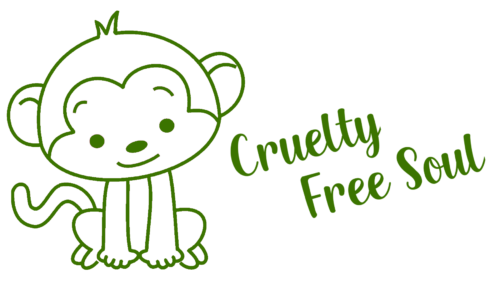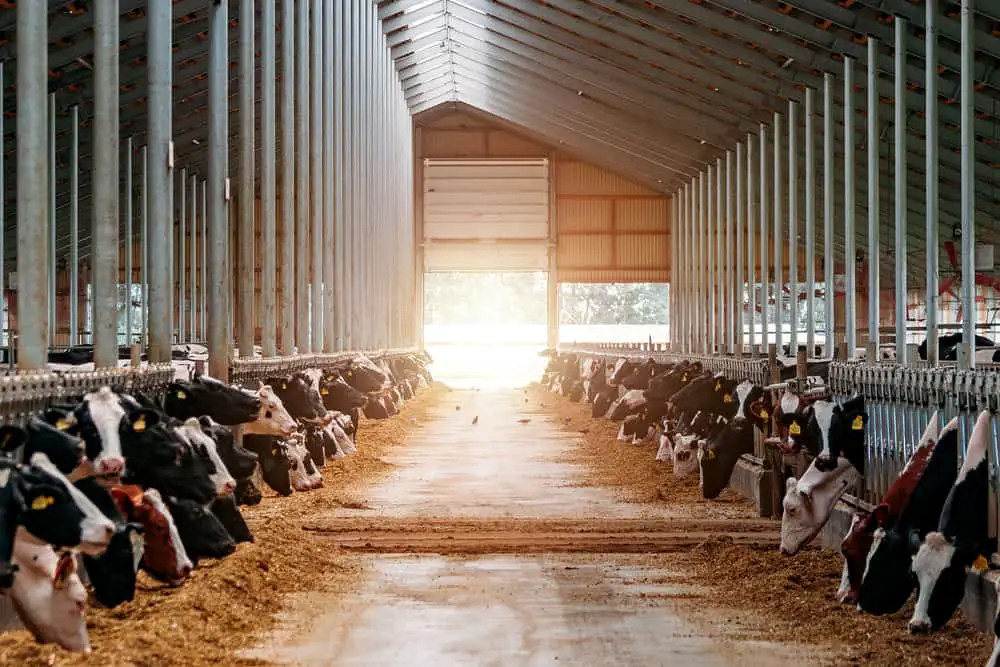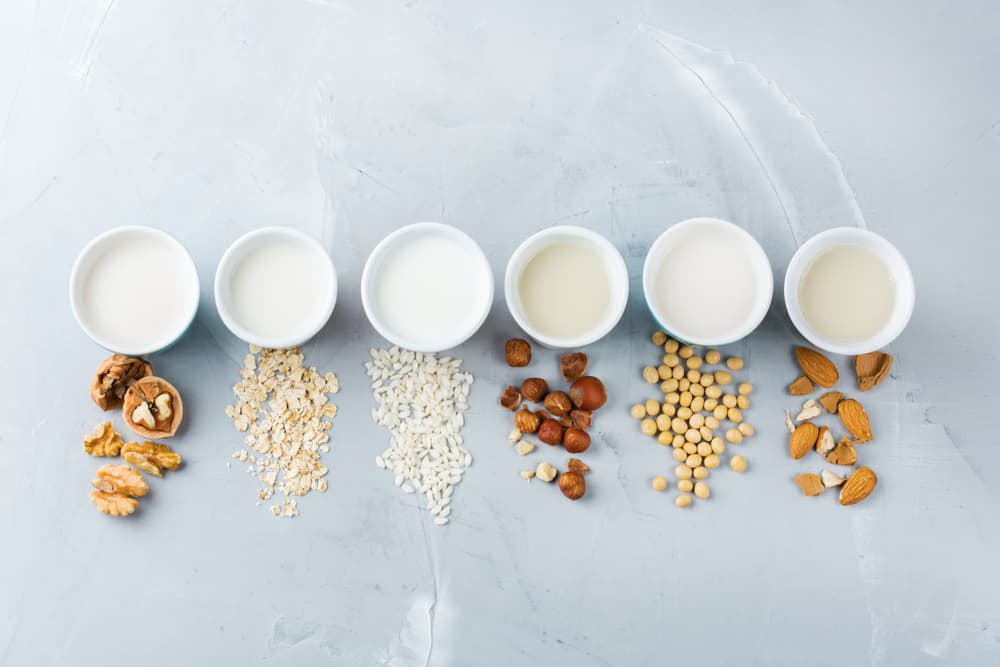Dairy consumption in the United States and large markets like China is expanding at an accelerated pace. And the only way to keep up with demand is by exploiting cows in a way never seen before. Today, the milk industry has become so huge that ethics have fallen by the wayside.
The modern milk industry is extremely cruel. Cows are artificially inseminated for reproduction once a year solely for the sake of milk production. When the cows stop producing, they are inseminated again and again. After four years of milking, they are sent to slaughter.
The milk industry is considered to be even crueler to the animals than the beef industry. This is because cows must follow a never-ending cycle of unnatural breeding and milking. Read on to learn more about the milk industry and why it is so cruel to the cows it exploits.
The Cruel Milk Cycle
The only way female cows can produce milk is by having calves. Therefore, farmers have to have them artificially inseminated. When the calf is born after nine months, it is separated from its mother in a traumatic way, so it does not drink the milk that was intended for it.
The lactation period for cows can last around 305 days. So, after this period, the cows are inseminated again to be able to produce milk again. If the calves are female, they will become milk cows like their mothers at 15 months old. The reason they start so early is that younger cows are more productive than older cows.
After four or five years of intense milking, the cows are sent to slaughter and are replaced with younger ones. Male calves serve no purpose in the milk cycle, so they are killed when they are as young as six months old.
Slaughtering males at such a young age is common for veal production – one of the most barbaric processes out there. It’s so cruel that it has even been banned in certain countries.
Increase in Milk Production
Milk production started to increase at astronomical levels in the US in the mid-20th century when the federal government fixed a meager price for liquid milk. So, farmers had to produce more and sell more to survive in the industry. Since that time there was also an increase in global production.
Consequently, the industry became one of the cruelest in the world as farmers tried to find ways to increase production while keeping the same number of cows. In doing so, cows' bodies were modified to produce more milk.
Here are some USDA statistics you need to know:
How Did Increased Production Happen?
More than 50 years ago, small farms started to disappear to become factories. Manual milking could no longer keep up with the massive operations. Farmers who might have had good intentions and positive practices were pushed out without a choice.
One of the main changes in this industry was introducing technology in the milking process, and automatization was introduced in the milk production cycle.
Use of Technology
The most pivotal change that happened to increase milk production was the implementation of milking robots. These machines made it possible to milk 600 cows per hour. Suddenly, the efficiency of modern milking technology reduced the production costs as farmers could produce more milk in the same amount of time.
With these robots, farmers began milking cows during the whole lactation period, which is around 300 days, twice a day. And automatization was not limited to milk extraction – it has also been automatized, routing the cows before and after it. Today, these robots can even massage the cow's udder to get held milk.
Diet Changes
Another way production increased was when farmers changed the cows' diets to include high levels of protein and growth hormones.
Daily hormones injections for ten days increased milk production by 18 percent and reduced food costs for these animals. After this was implemented, cows could produce 22,000 pounds of milk each year.
Though most farmers were focused entirely on increasing production, there were some consequences. The supply exceeded the demand, dropping the prices for a long time, even until now.
This is an increase of 28% in 25 years. Because of this, this industry has been supported by the government to keep producing. In the US, this industry received 1 billion dollars back in 2018.
Cow Welfare Concerns
One of the reasons this industry has been categorized as cruel is because it creates a milking cycle that never stops. Cows can live up to 25 years naturally, but giving birth once a year and being over-milked daily exhausts their bodies. They usually are sent to slaughter when their milk production decreases after five years.
Cows' bodies are highly exhausted at a young age because their production of milk is highly unnatural. Nowadays, a milk cow produces ten times more milk than the amount they naturally produce when they give birth.
Also, like other businesses, the milk industry tries to minimize costs in many ways. One of them is by maximizing the space that the cows are raised in. Most cows stay in small places that are overcrowded, and they are not allowed to graze – not even once in their lives.
Udder Infection
Because of the high impact of milk production, dairy cows suffer from udder infections pretty often. One of the most painful ones is the mastitis infection that can cause them to be sent to slaughter.
Mastitis is caused by the overproduction of milk from their udders. If a cow with mastitis is continuously milked, the pain is unbearable. Mastitis is treatable, but it could be easier and cheaper to write an entire cow off as a loss than to try to treat the infection in factory dairy farms.
Altering Cow Genetics
Many farmers have also modified their cows’ genetics so that they are bigger, hungrier, and have larger udders that hold more milk.
Recently, it has been shown that farmers are even trying to use biotechnology so cows only can have female calves. They hope to eliminate male calves, which are useless for the milk business.
Can It Get Worse?
The milk industry is experiencing a crisis since overproduction has reduced prices and, in result, farmers' profits too. Not to mention that consumer's preferences have also changed. Over the last 30 years, the demand for milk has declined steadily.
But in the mid-20th century, farmers wanted to increase production to keep a cash flow. So a few things may happen in result:
What Do Dairy Farmers Say about Cruelty in the Milk Industry?
Most farmers state that the negative things that have been said about the milk industry are not true and that consumers do not understand the meaning of welfare for these animals.
One of these misunderstandings is the move toward a zero-grazing system that has been questioned worldwide. It has been widely shown that consumers associate pasture access with good welfare. But many studies have shown that cows prefer pasture grazing at night and to remain indoors during the rest of the day.
Also, there is a difference between welfare priorities between veterinarians, scientists, and the public. Most of the industry's focus is on finding nutritional strategies to improve milk production and its health. But the public believes milk farmers should be most concerned about avoiding cows' stress and pain.
Some dairy farmers claim that they are working to improve the industry. One way is by using sexed semen. If farmers can ensure a cow will have a female calf, it will prevent male calves from being sent to slaughter. Whether this is enough of an improvement in an overall cruel industry is up for debate.
Not All Farms Are the Same
The milk industry has been seen as cruel because of its many strenuous activities:
However, not all farms follow this pattern.
This industry became cruel when maximizing production became the primary goal. But shifts in consumer preferences are changing the business. Some small farms are trying to produce milk in an animal-friendly manner. In the US, milk demand for regular milk decreased by 46 percent, but organic milk consumption has increased.
In some countries where milk is not a commodity, the main goal is to produce specialized milk with better quality than regular milk. This is true for most farms in the Netherlands, which cannot compete in the milk market against countries like the US by price, but they compete by quality.
European Regulations
There is an increasing market appetite for this kind of specialized milk even outside of the Netherlands. Sixty-five percent of Dutch milk is exported annually to countries like China, South Korea, and Japan.
Other countries like Sweden have regulations that help protect animals' welfare, and milk farmers are obligated by law to offer female cattle grazing for 6 hours a day during summer.
Another regulation was placed in 1997 in the European Union that helped stop calf cruelty. Before this regulation, calves used to live in small boxes, and feeding was so minimal that their immune systems could not develop properly.
Organic Milk Boom
The industry has not always been as cruel as it is now. Fifty years ago, when a cow was impregnated by a bull and gave birth to a calf, the farmer would only milk the cow's excess milk by hand, after the calf had already fed, up to three months after the calf was weaned. The milk would be used for drinking, making butter, or making cheese.
This industry became cruel when maximizing production became the primary goal. But changes in consumer preferences are changing the business. Some small farms are trying to produce milk in a more animal-friendly manner. Apparently, this is because even if production is higher – profits have decreased in the regular milk industry.
Certain farmers in the US realized that people might pay more for better milk. Therefore, some avoid hormones and feed animals grass to reduce milk extraction automatization and avoid cow's udder infections.
In the US, there are certified organic farms that are 100 percent cruelty-free. One of these is also a sanctuary called Gita Nagari Yoga Farm. On this farm:
Industry Changes
Farmers worldwide are noticing the power consumers have to change their purchasing decisions and avoid production systems that are cruel to animals. There is now a certification within this industry called The Animal Welfare Approved (AWA).
Even large milk companies are starting to see a bright future in other kinds of milk since consumers are looking for non-dairy products. Such was the case of Elmhurst 1925 who stopped selling cow's milk in 2016 to focus its production on vegan milk.
Even if people are demanding changes within the industry, there is still a high demand for dairy products around the world that may cause farmers to continue overproducing to supply the market.
Large markets like China have had a recent development of the dairy industry. This industry in China has been growing every year thanks to the increased consumption of milk, yogurt, and milk powder. It is expected that the Chinese market volume will overtake the American market in 2022 to become the world's largest dairy market.
Vegan Milk Alternatives
Many consumers are moving away from dairy milk altogether. More information about the dairy industry has come to light over recent decades that have turned consumers off from purchasing milk and supporting the cruel industry.
There are also health concerns that have led consumers to stick with non-dairy and vegan milk alternatives.
If you’re eager to switch to vegan alternatives – we definitely recommend reading this article for more information: Can Milk Be Cruelty-Free?
New generations take moral aspects behind a product whey they consider items for purchase. In the age of the internet and social media, the milk industry's bad reputation for cruelty cannot be hidden away out of sight. Any scandal or found documentary footage can become worldwide news in a matter of hours.
Is A Cruelty-Free Milk Industry Possible?
The definition of cruel is "willfully causing pain or suffering to others or feeling no concern about it." So, even if farmers do not inflict pain on these animals purposefully, the industry is still considered cruel.
Cows born on milk farms have little freedom, and their bodies are exploited during their entire life.
The industry itself became cruel when it became an industry. Some farms might be less cruel than others, but there is no such thing as cruelty-free dairy milk.
What is happening in most European countries is that they have changed all aspects of production. This market stopped increasing production and focused on organic milk, therefore increasing profits of higher prices.
The problem with organic production is that farmers may want to produce more milk to secure higher profits since the price is higher. Focusing on the price rather than liters sold and greater motivation for increasing production may start the ruthless cycle again.
Conclusion
Farmers in the US and all over the globe were pushed to increase milk production to survive. They accomplished this by changing cows' bodies, using milking robots, and changing cows' diets. Calves were snatched from their mothers, and the milk meant for them was taken to sell to human consumers.
But milk farmers have been facing other challenges even if production was increased drastically. First, consumption has been dropping steadily during the last 30 years. Second, consumers are changing their diary consumption habits. And third, other non-dairy products are competing successfully in this market.
The concern of consumers regarding animal welfare has the power to change industries like this one. The milk producers who understood that people were going to refuse to purchase animal-cruel products are now the ones that are leading the market, apparently for many years ahead.



